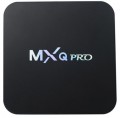Operating system
—
Proprietary system. The operating system of the device is represented by the proprietary software shell of the manufacturer. Usually, such operating systems have an attractive and convenient menu. A proprietary operating system is developed directly by the manufacturer for the hardware resources of a particular model or a whole line, but has limited capabilities.
—
Android (AOSP). This type of operating system is a modification of the popular Android OS, mainly notable for being open source. It is a versatile operating system that gives the user much more freedom to create changes and customizations within the system itself. At the same time, the installation and stability of certain applications on this platform are not guaranteed, and the overall system management was not specially “tailored” for large screens, which may cause some inconvenience. First of all, such solutions will interest users who understand the features of the Android OS, like to customize and control everything for themselves, and have time for this.
—
Android TV. Devices of this type have full-fledged Android TV software, specially adapted to work on large screens. In accordance with the name, it is a type of Android OS, specially designed for such equipment. In addition to the common features of all Androids (such as the ability to install additional applications, including
...even games), it has a number of special features: an optimized interface, integration with smartphones (including the ability to use them as a remote control), voice search, etc. Thanks to this, TVs with this feature are significantly superior in functionality to models with a “regular” Smart TV. Of course, a dedicated processor, graphics subsystem and memory are provided for the operation of a multifunctional OS, and the presence of such hardware resources is reflected in the overall cost.
— Google TV. Rebranding of the Android TV platform for TVs and smart consoles, or rather, a new shell on top of the operating system under the sign of the “green droid”, introduced since 2021. Among the innovations, it has a redesigned user interface, an improved knowledge base that more efficiently distributes content by genre and collects search information from the entire list of installed applications and subscriptions. The voice assistant now understands the needs of the audience better and provides a detailed list of what was found. A separate tab in the interface contains live broadcasts of current events, whether it be sports events or a rocket launch to Mars. Among other things, the aspects that involve the use of TV as a command post for managing a single ecosystem of a “smart” home have been improved in the system.CPU frequency
The clock speed of the CPU installed in the media centre.
On the technical side, the higher this indicator, the faster the processor works and the higher, accordingly, the overall system performance. At the same time, the CPU performance depends, in addition to the frequency itself, on a number of factors — architecture, number of cores, special design features, etc.; and the actual speed of the entire system is affected by performance of components other than the processor. In addition, manufacturers usually select processors in such a way that their computing power is guaranteed to be enough for all the features claimed for a media centre. Therefore, in this case, the CPU frequency is more of a reference parameter (and partly an advertising indicator that demonstrates the advanced specifications of the device), rather than practically significant for buyer.



